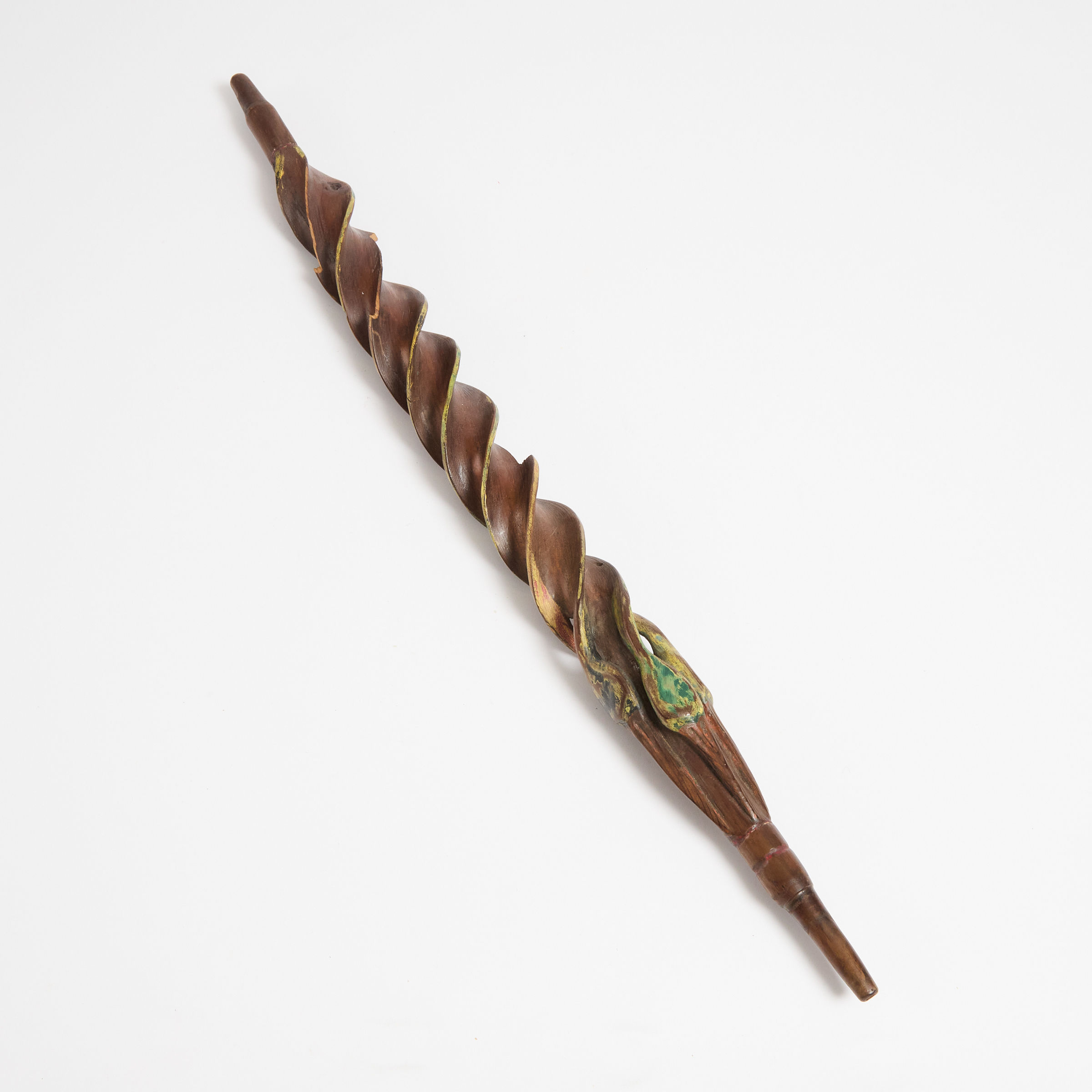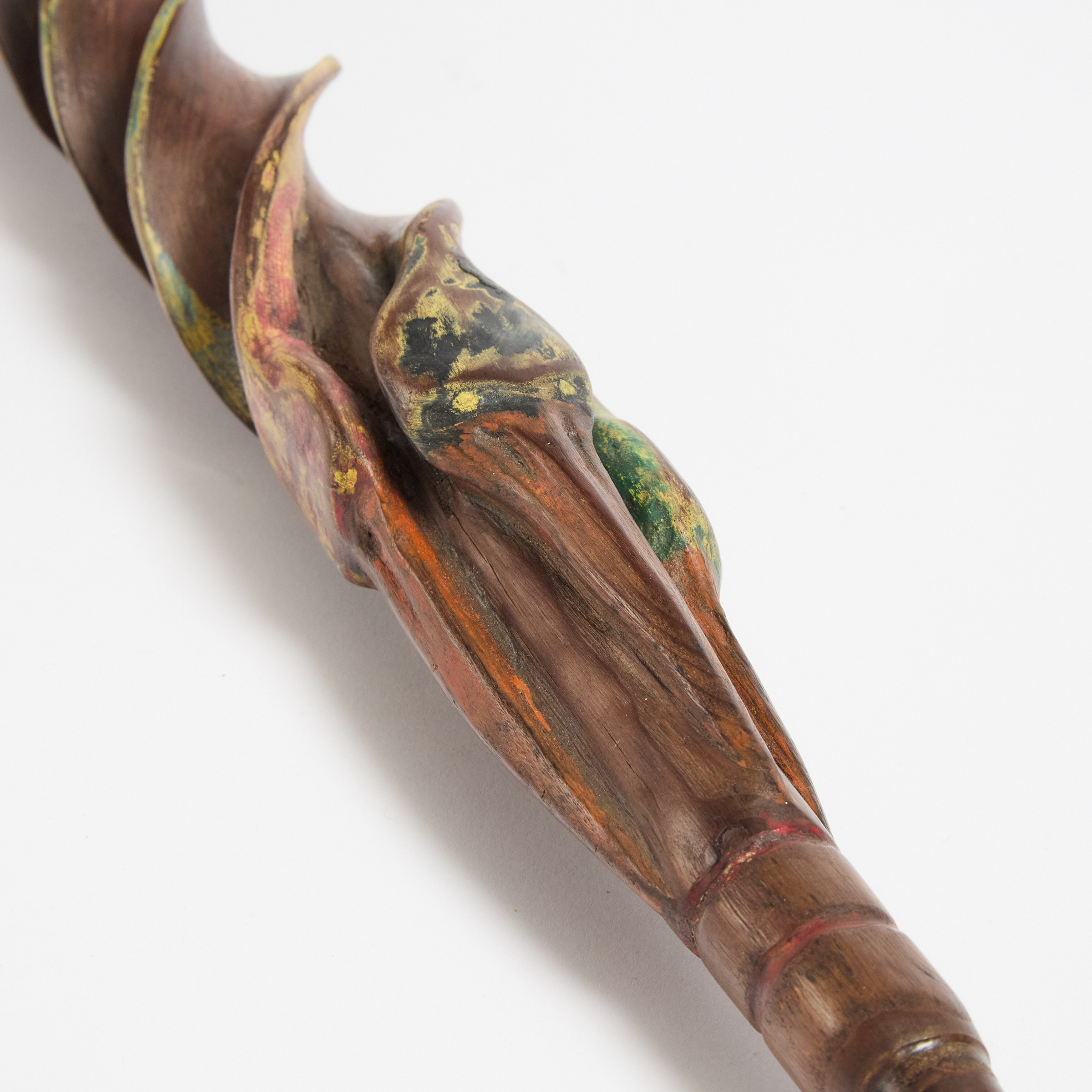Lot 27
Unidentified Artist, Anishinaabe (Ojibwe) or Isáŋyathi (Eastern Sioux)

Additional Images

Provenance:
Steven Lalioff, Indiana;
Private Collection, Toronto, ON;
Note:
Historic spiral pipe stems in North America are most commonly attributed to the Ojibwe and Isáŋyathi (Eastern Sioux), and are documented as being collected almost exclusively in present day Minnesota and Wisconsin. (1) Spiral pipe stems are well documented in the first half of the 19th century and can be found in the illustrations of George Catlin. (2)
The majority of 19th century pipe stems are made from ash wood, due in part to the ease in which ash pith is removed to fashion a hollow channel through which smoke may pass from the pipe bowl to the smoker. The present example is notable in that its smoke channel is not fully excavated, meaning that smoke cannot pass through it. The stem is also carved from an unconventional material, a delicate softwood, identified by Dr. Theodore Brasser as likely being white cedar. (3) Dr. Brasser was a curator at the Canadian Museum of History, professor of art history at Carleton University and professor of anthropology at Trent University. He has written extensively for American Indian Art Magazine and numerous museum and scholarly publications on art of the Great Lakes, Plains, and Eastern Woodlands.
Objects made for sale to Euro-American soldiers, missionaries, and other early travelers to Canada can be found even in the 18th century. Increasingly, research into 19th century touristic production by North American Indigenous makers suggests that some objects may have been deliberately fashioned to provoke divergent readings for Indigenous and Euro-American audiences. (4) Objects which may have outwardly appeared sacred may have been inwardly constructed to be profane. Similarly, objects which, made for commerce, may have suggested the adoption of European modes of production may have–through their imagery or form–perpetuated Indigenous ways of understanding.
While the imagery and motifs of the present stem visually adhere to the characteristics of sacred stems, its material composition and internal construction details are strongly suggestive of an early commercial context. Finely carved, the outwardly visible form is defined by four projecting helical ribs that are transformed into four individual carvings of crane or possibly egret heads as the spiral nears the proximal end (bowl end) of the stem. Of the pipe stem, Dr. Brasser has said that it is "the work of an expert carver, and (a sculpture) of great quality." (5)
1. Drs. Theodore J. Brasser, written correspondence with the previous owner, n.d.
2. John C. Ewers, Indian Art in Pipestone: George Catlin’s Portfolio in the British Museum, (Washington: Kingsport Press Inc., 1979), 41, pl. 10
3. Brasser
4. Ruth B. Phillips, Trading Identities: The Souvenir in Native North American Art from the Northeast, 1700-1900, (Hong Kong, University of Washington Press, 1998), 19-20
5. Brasser
Related Works:
National Museum of the American Indian, Cat. No. NMAI E23722-0




